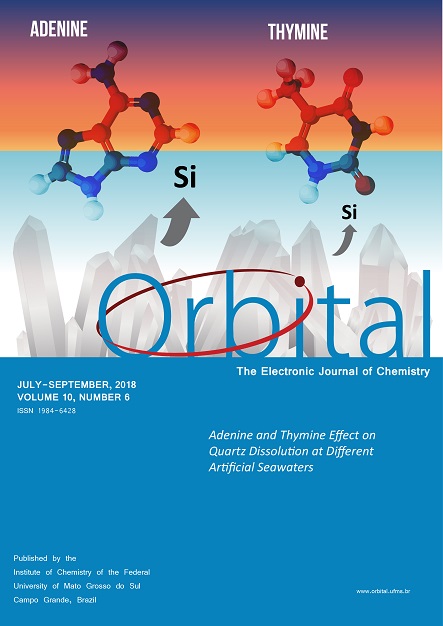- p-nitrophenol,
- kaoline;,
- chitosan,
- cysteine
Copyright (c) 2018 Orbital: The Electronic Journal of Chemistry

This work is licensed under a Creative Commons Attribution-NonCommercial-NoDerivatives 4.0 International License.
Abstract
Natural adsorbent prepared from kaolin clay (RK) as well as RK modified separately with cysteine (CYMK), and chitosan (CHMK) was used for the removal of p-nitrophenol (PNP) from aqueous solution. Prepared adsorbents were fully characterized using X-ray diffraction (XRD), X-ray fluorescence (XRF), scanning electron microscope (SEM) and Fourier Transformed Infrared Spectroscopy (FTIR). Vivid characteristics of kaolinite were shown by FTIR spectroscopy and surface modification showed new absorption bands which corresponds to the unique functional groups in the modifying agents. Surface morphology was also altered after modification. Surface modification enhanced adsorption capacity. Adsorption data fitted best into the Freundlich adsorption isotherm for the three adsorption systems thus suggesting multi surface adsorption. The maximum monolayer adsorption capacities were 6.94 mg/g, 4.61 mg/g and 6.56 mg/g for PNP-RK, PNP-CYMK and PNP-CHMK systems respectively. The pseudo second order kinetics best described the kinetics of the adsorption system. Temperature effects showed that the adsorbents were stable across the temperature considered and thermodynamic parameters showed that the adsorption processes were feasible and spontaneous.

